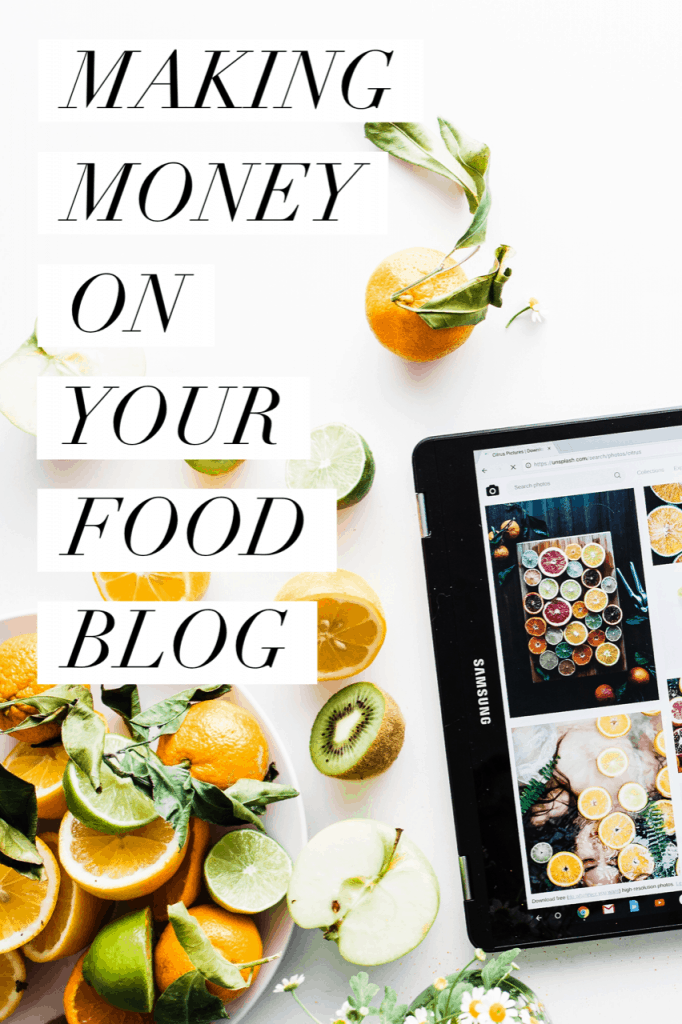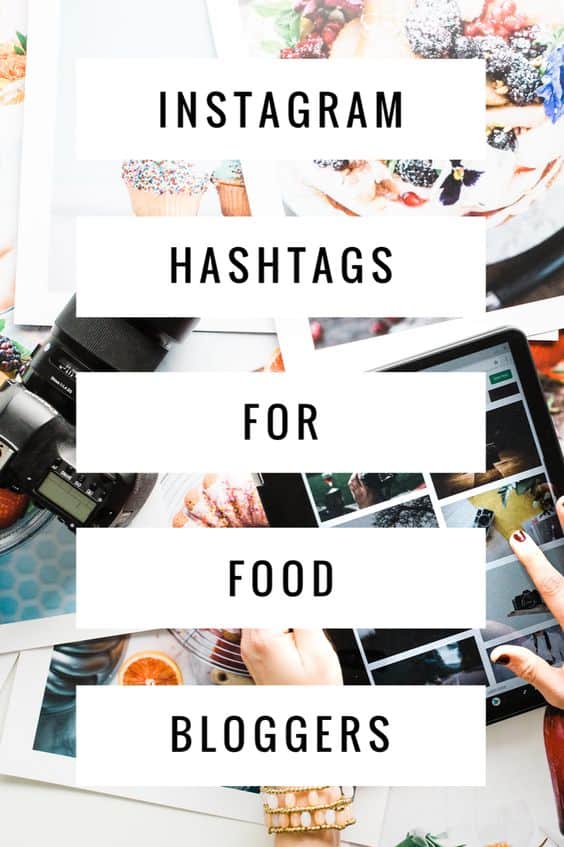Here's how to make money on your food blog. Maybe you want to go full-time on it and quit your day job, or you'd just like it to bring in some extra income.
I was able to go full-time on my site in 2020, and it's been a dream come true. Now, the site reliably makes a great 6-figure income every year for me, but it took me six years to get to that point!
Either way, food blogging can be lucrative, but there are several things to know about it. Read on to find out how food bloggers make money!
Can I make money blogging?
The answer is yes. But (and this is a big but) it's not overnight and it takes a lot of work. I know you've seen income reports and pins on Pinterest that say "How I made $15,000 my first month of blogging" - most people make a couple of thousand dollars their first year of blogging (if that), till they figure it all out.
It's a very rare blog that makes big bucks from the start.
There are several ways to monetize your blog but there are three things I want you to know before we talk about making money - because these things are the groundwork you'll need to lay before we go any further.
How to Attract Traffic to Your Site
1. Creating Excellent Content
You'll really start to see some traction on your blog when you have 100 excellent posts published. This means the photos need to be high-quality, you need to have an easy-to-read layout, and offer great tips or interesting information in your post.
Please also blog on WordPress. I started on Squarespace, and it was a mistake - I thought Wix and Squarespace were easier to use than WordPress. As soon as I switched to WP and had access to the Yoast plugin and a recipe card, my traffic doubled.
Additionally, your site needs to be fast. If you're a new blogger, you can start on cheaper hosting like Siteground or Bluehost, but they are honestly not very good hosts when you have more traffic. Once I started to get 30,000 pageviews a month, I switched to BigScoots hosting and have been very happy.
Also, give people what they want - I know this seems obvious, but really do it. People like things that are either easy and quick or have great step-by-step instructions. Don't just write about what you like without thinking of your target audience.
If you have a food blog, remember not everyone is as comfortable in the kitchen as you are - so err on the side of more instructions and tips.
Resource suggestions:
- To improve your food photography - I wholeheartedly recommend the Tasty Food Photography ebook.
- Read this post on How to Develop a Recipe
- Read this post on How to Write a Recipe Like a Professional
2. Search Engine Optimization
Early in my blogging career, I completely ignored SEO, and my site suffered for it. It seems daunting and overwhelming, but if you want to be successful long-term, you need to understand how Google works and how people search and find recipes online.
You can consult beginner guides like Yoast's SEO for food bloggers or listen to podcasts like Food Blogger Pro, Eat Blog Talk, or The Blogging Millionaire to get started.
I can't explain SEO fully in this post, but I highly recommend learning anything and everything you can about SEO from Facebook groups, YouTube tutorials, Reddit posts, podcasts, and free online guides and webinars (like the SEO for Bloggers from Top Hat Rank).
3. Building a Mailing List
Almost every blogger is going to beat you over the head with this one but it's actually true! Especially when your blog is new and not getting as many page views, it can be hard to make revenue off of ads.
But, if you have a decent-sized mailing list (500 to 1000 people) you can start selling them digital products or sharing affiliate links with them. If you build up their trust, they will buy from you.
4. Social Platforms
Brands like large social media followings because it gives you social proof. This one is the hardest for me, but I've seen real success when I actually started doing it.
I chose Pinterest as my main social platform because it drives traffic, and I want a lot of traffic. I wish I was one of the cool kids with a massive Instagram following, but it's just not my priority now.
Once I learned about Pinterest, I started focusing on Facebook. My main focus will likely always be Pinterest, though. I've entirely given up on Twitter - I hate it so why spend time on it? Do what you love + what will make you money.

Ways to Monetize Your Food Blog
It's essential to have a variety of income streams for your blog - especially as more people start to use ad blockers, bloggers need to be more creative when it comes to their revenue. Here are a bunch of ways to monetize your blog.
1. Ad Networks
Ads can make good money (for proof, check out Pinch of Yum's income reports), but they require a lot of page views. Typically, people make the most money on AdThrive and Mediavine.
Think of Gourmet Ads and Google AdSense as a way to cover your costs while you grow. As soon as you hit 50k sessions a month, apply for Mediavine.
Ad companies for food bloggers (from least to most subscribers needed):
- Google AdSense - no page view requirements, but the site must be active for six months
- Gourmet Ads - 10,000 page views a month required
- Mediavine - 50,000 sessions per month are required
- AdThrive - 100,000 page views a month are required
2. Sponsored Content
Sponsored content from brands can result in serious money if you have great photography and a large following. Essentially, sponsored content is a brand paying you to use their product and link to their website.
Typically, you will need to pitch brands that you want to work with. When you get larger, brands may seek you out directly.
You can also join networks like Social Fabric, Tap Influence, or Blog Meets Brand. These agencies work with brands and will hire multiple bloggers or influencers for specific campaigns. Typically, these sites like to work with bloggers who have large social followings, but it's worth signing up to see what's available.
If you are interested in pitching brands, I highly suggest joining the Influencer Entrepreneurs with Jenny Melrose Facebook group. Jenny Melrose offers a paid course and free 5-day pitch plan as well.
3. Affiliate Sales
Affiliate sales as a monetization strategy are on the rise. Affiliate marketing is a way for businesses to give you a small percentage of the profits from products you promote. Lots of bloggers, not just food bloggers, use this strategy.
Root + Revel was a good example of a food blogger making great money off affiliates, which she primarily shared in her newsletters (she has since sold her site in a 6-figure exit).
For more information on how to make money with affiliate marketing, I'd recommend this podcast from Amy Porterfield.
The most extensive affiliate programs for bloggers are Amazon, CJ, Shareasale, Awin, and Rakuten - but there are many, many more options!
4. Selling a Product (Physical or Digital)
Selling a product is a great long-term strategy for making money on your blog. Typically, bloggers sell digital products (e-books are very common) and many have their own affiliate program to encourage other bloggers to promote for them.
If you're interested in creating a physical product, I would recommend listening to the Food Blogger Pro podcast where Ali talks about developing her spiralizer.
If you're interested in creating an e-book, I think Pat Flynn's free ebook on ebooks is a fabulous resource!
5. Creating a Course of Membership Site
Often when you see bloggers raking in major money, it's because they have created a course or an ebook. She's not a food blogger, but Michelle from Making Cents of Sense shared a recent income report where she made $136,000 in a month - 49% of it from selling her course on affiliate marketing, 37% from affiliate marketing, and only 2% from ads.
You've got two ways you can go on courses and membership sites:
You can take the Pinch of Yum/Food Blogger Pro approach and create courses and membership sites for bloggers, or you can create courses based on your niche content.
So, even though there's great money to be made in creating courses for bloggers, you can certainly sell a membership site or course to your food blogging niche as well!
6. Offer Coaching Services
Some bloggers do very well with coaching services - I've seen several people do incredibly well with weight loss and meal planning coaching.
Coaching is a great option for people who are nervous about being lonely while blogging (it's a real thing).
If you're a people person but still want to be your own boss, coaching could be a great income stream for you. It isn't passive income, though - it is definitely exchanging time for money, so if you're looking to work from anywhere in your own time, this might not be a good option for you.
7. Freelance
There are all sorts of ways to freelance as a food blogger. You can take photos or shoot videos for brands and restaurants or work for other food bloggers.
Some smaller bloggers (who are very talented) will take photos for big-name bloggers who need to improve their older recipes/photos. Or, you could become a writer/editor for a food blogger. There are several virtual assistant groups you can advertise in, like this one - VA for hire: Content for Bloggers.
There's a great course run by some very successful food bloggers called Pretty Focused that teaches people to take photos for bloggers. They also have a private Facebook group that I'm part of where photographers can sell their recipes and photos to bloggers. The course is a bit pricey, but all the work I've seen from graduates is top-notch, so I would recommend it if you want to improve your photography and make some quick money.
I hope this post helps you make all the money on your food blog - hit me up with any questions in the comments below! And check out our other blogging articles - Sharing Sites for Food Blogs and Best Instagram Hashtags for Food Bloggers.



Cortney says
You're a wealth of knowledge, Emily. Your content is speakin' to me! Big thanks for taking the time to develop this.